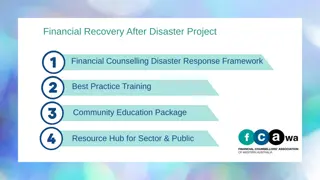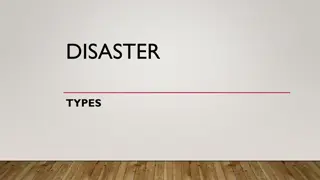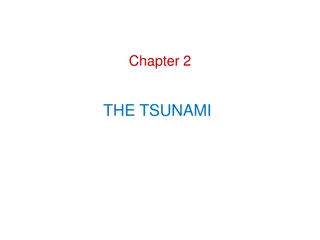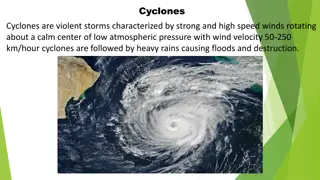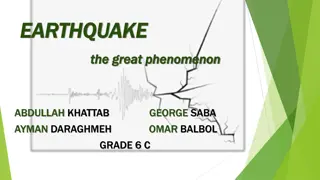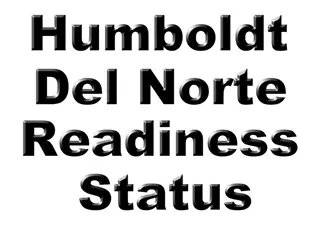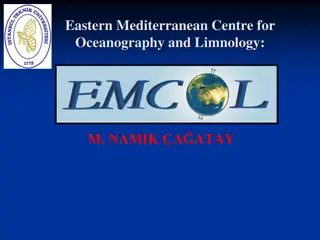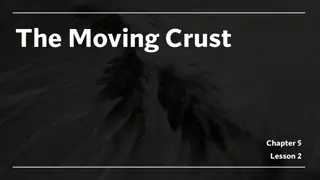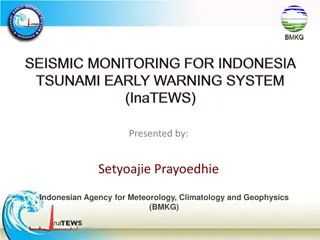Financial Recovery After Disaster Project: Comprehensive Framework for Community Resilience
This project focuses on financial recovery after disasters through financial counseling, disaster response frameworks, best practice training, and community education resources. It emphasizes understanding disaster risk governance, fostering individual responsibility, and identifying community champ
6 views • 5 slides
Understanding Different Types of Disasters and Their Impact
Disasters, whether natural or man-made, can cause massive disruptions leading to human suffering, economic loss, and environmental damage. Natural disasters like earthquakes and cyclones, geological disasters such as volcanic eruptions, hydrological disasters like tsunamis, and climatological disast
0 views • 11 slides
Understanding Tsunamis: Nature's Powerful Force
Exploring the devastating impact of tsunamis, this chapter delves into the causes, effects, and responses to these seismic sea waves. Through real-life narratives and new vocabulary, readers gain insights into the science and aftermath of natural disasters like tsunamis.
0 views • 8 slides
Understanding Cyclones and Tsunamis: Causes, Effects, and Management
Cyclones and tsunamis are natural disasters that can have devastating effects such as strong winds, heavy rains, floods, and destruction. Cyclones are violent storms with high-speed winds rotating around a calm center of low pressure, while tsunamis are seismic sea waves caused by earthquakes or und
0 views • 9 slides
Understanding Earthquakes: Causes, Effects, and Intensity Factors
Earthquakes are sudden shaking movements of the Earth's surface caused by various factors like tectonic plate movements, volcanic eruptions, mining, and construction. They result in ground shaking, rupture, tsunamis, and landslides, with intensity influenced by factors such as distance from the epic
0 views • 10 slides
Tsunami Preparedness and Response in Del Norte and Humboldt Counties
Del Norte and Humboldt Counties in California have implemented various measures to prepare for and respond to tsunamis, including installing warning sirens, creating informational materials, and coordinating with local schools and community groups. During a simulated event on June 14th, the counties
0 views • 9 slides
Eastern Mediterranean Centre for Oceanography and Limnology (EMCOL): Research Focus and Facilities
EMCOL, led by M. Namik A. Atay, focuses on natural hazards, environmental changes, and earthquake risk assessment. Their research fields include earthquakes, submarine landslides, tsunamis, sea-level changes, climate change, and paleoclimatology. The center conducts fieldwork using various equipment
0 views • 13 slides
Probabilistic Tsunami Hazard Assessment Project for the NEAM Region
The project, coordinated by Istituto Nazionale di Geofisica e Vulcanologia (INGV) with various partners, aims to develop a region-wide Probabilistic Tsunami Hazard Assessment (PTHA) for the North East Atlantic and Mediterranean coastlines. It involves creating PTHA database and maps, engaging intern
0 views • 10 slides
Threat Analysis and Mitigation Strategies for Impact Event: Briefing Summary
This briefing delves into the potential physical and infrastructure effects of an impact event with an asteroid of up to 400 meters in diameter, traveling at a speed of 16 km/s. The simulation highlights the significant threat of tsunamis resulting from such an impact, with tsunami strength varying
0 views • 5 slides
Exploring Earth's Dynamic Forces - Chapter 5 Highlights
Learn about tectonic plates, faults, earthquakes, tsunamis, seismic waves, seismographs, volcanic activity, and more in this engaging chapter. Discover how the movement of Earth's crust gives rise to mountains, earthquakes, and other geological phenomena.
0 views • 20 slides
Tsunamis in the POLA and POLB: Wave Interactions and Considerations
Tsunamis' impact on harbors like POLA and POLB, including wave interactions with moored ships and land-side facilities. Explore the response of harbors to wave-induced oscillations, velocity considerations, and tsunami sources. Insights into historic far-field tsunamis and Southern California bathym
0 views • 13 slides
Understanding Earthquakes: Causes, Effects, and Intensity Factors
Earthquakes are sudden shaking movements of the Earth's surface caused by various factors like volcanic eruptions, tectonic plate movements, mining, and construction. They result in ground shaking, ruptures, tsunamis, and landslides, with intensity affected by distance, depth, population density, ge
0 views • 10 slides
Enhancing Disaster Preparedness with Indonesia's Seismic Monitoring Network
Indonesia's Digital Seismic Network, operated by the Indonesian Agency for Meteorology, Climatology, and Geophysics (BMKG), comprises 164 stations strategically located across the country. The network provides critical seismic data for the Seismic Integration System of InaTEWS, supporting real-time
0 views • 11 slides
